Australia So Much to See
Scaevola spinescens, Currant Bush, Prickly Fan-flower, Spiny Fan-flower, Maroon Bush, Murin Murin, Poontoo
Small white hairy
fan flowers on a bush with flat slightly fleshy leaves of which width can vary, to an elongated spoon shaped tip, with thorns
along the stems.
Seen in Spring at many locations, and can flower most months of the year.
Occurs through most of Western Australia
including the desert regions, through the Pilbara, Goldfields, Mid West, Wheatbelt, Great Southern regions, but excluding the south
west corner of the state and the Kimberley apart from the coastal areas around Broome.
Under the name Maroon Bush, it is well
known as a herbal tea said to cure some cancers and other ailments. See Natural Cancer Treatment and Medicinal potential
of Scaevola spinescens
Scaevola repens var. repens
Prostrate spreading to ascending shrub up to thirty centimetres high. Small white or cream hairy fan flowers
are symmetrical, with darker markings near the flower centre. Alternating foliage flat and elongated, linear or slightly oval,
and direct from stems with no petiole (leaf stalk).
September
Lancelin, in the Gingin shire, Wheatbelt region, Western Australia, growing
in sand. This subspecies occurs from around Jurien Bay south to Perth, and inland to York, with scattered occurrences south
of Perth and in the southern Wheatbelt.
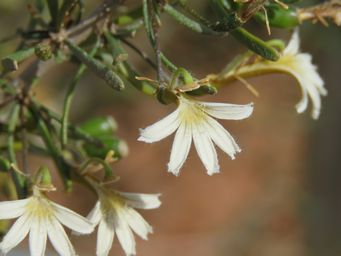
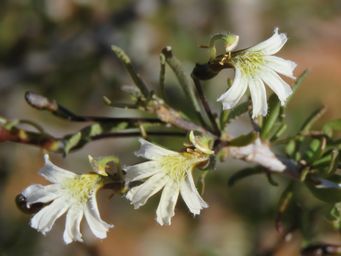
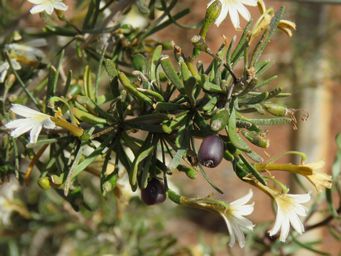
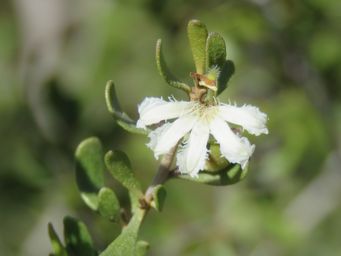

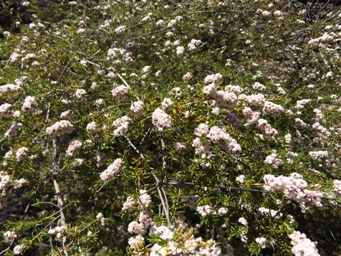
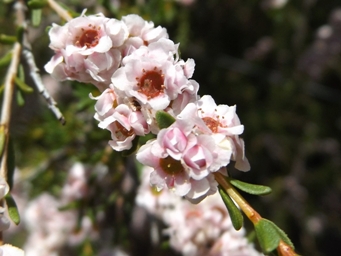

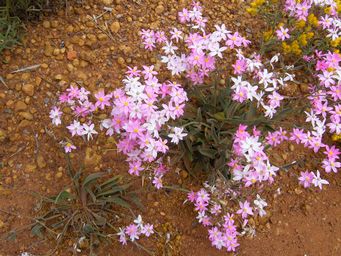

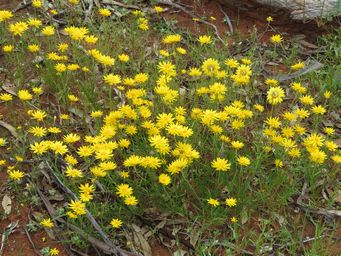
Schoenia filifolia, most likely subspecies filifolia based on location, Showy Everlasting
A bright yellow paper daisy with an orange
centre. Leaves are narrow, short and alternating.
August
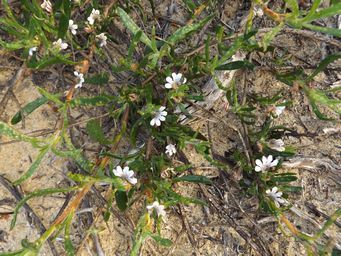
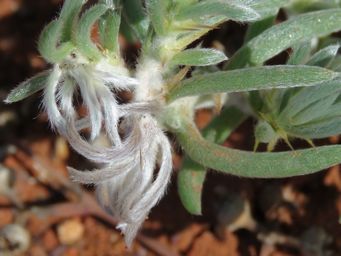
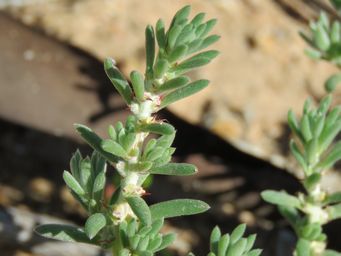
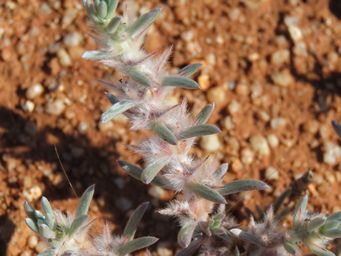
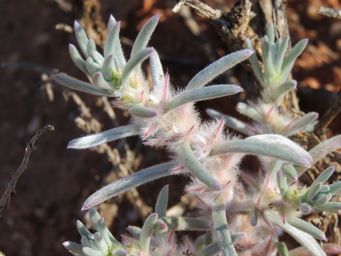
Sclerolaena diacantha, Grey Copperburr, Horned Bindyi, Grey Bindyi.
A small low growing plant, upright or straggling, which may reach
twenty to thirty centimetres. Succulent leaves are slender and flattened, covered in fine silky hairs, particularly on new growth,
giving a greyish appearance. Short hairs also on the stems. Female flowers are low down in the plants, with male flowers up
the stems, with flowers being tiny. They develop from a fluffy white mass, which have two protruding spines.
July and
seen in August.
Photographed at Karomin Rock, Nungarin shire, Wheatbelt region, Westonia, Mid West Region, and in the Leonora shire,
Goldfields region, Western Australia. Widespread through much of the state, with the exceptions of the far north and Kimberley,
South West and Perth Peel regions. Also found in all mainland states.
Sclerolaena eriacantha, Silky Bindyi, Silky Copperburr, Tall Bindii, Silky Bindieye.
A small low growing plant, upright or straggling, which may reach forty centimetres. Succulent leaves are slender and slightly
flattened, covered in fine silky hairs, giving a grey appearance. Short hairs also on the stems. Female flowers are low down
in the plants, with male flowers up the stems, with flowers being tiny. They develop from a mass of silky white hairs, which
have two protruding spines.
August
Photographed south of Leinster in the Leonora shire, Goldfields region, Western Australia. Widespread through much of the state, with the exceptions of the far north and Kimberley, South West and Perth Peel, and southern
parts of the Goldfields regions. Also found in all mainland states, particularly the inland areas.